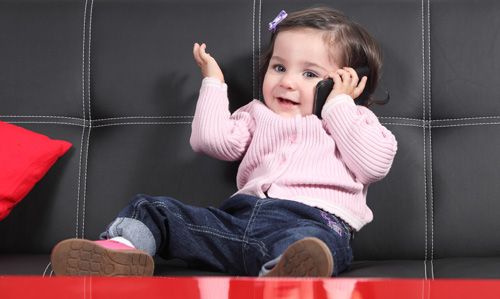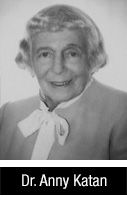We are discussing the origins of human development—feelings (affects), language, and cognition. We are currently immersed in issues involving language and how language impacts child development.
When Children Begin to Talk

“With the emergence (at around 18 months) of language…the child becomes a different being.”
– Barbara Fajardo, Ph.D.
I still remember the time my son said his first word. We were in the kitchen. He looked up over the counter, saw some fruit, and said “ap-ple.” I was stunned, then joyful—and surprisingly oblivious, at that moment, to the enormous and inspiring power that had been unleashed.
When a child speaks her first words, there is often a sense of relief. For months and months after a baby is born, parents struggle to understand the various noises, gestures, and expressions an infant uses to express needs, feelings, and thoughts. It’s a great thrill when you begin to sense that your child can understand what you are saying…you are beginning to function in the same reality, one shaped by words.
The toddler years provide spectacular opportunities for enhancing intellectual and emotional development. Language is a large part of this, opening up an entire new world of growth during the early years. And to hear a toddler begin to talk is an astonishing and poignant moment.
A Leap In Development
Language represents a huge developmental leap. Think of all the things we can accomplish with our words and language. We can enhance relationships with our children. We can share feelings and ideas. We can communicate complex thoughts and abstractions. We can describe physical sensations, and music, and visual forms, and art. We can tell jokes, share problems, discuss our sadness, sing songs, talk about likes and dislikes, tell people we love them or are angry at them. Our sophisticated as well as basic feelings and most of our complex thoughts can be put into language.

However, as the infant researcher and psychoanalyst, Daniel Stern, M.D., noted: Language is a double-edged sword—it can distort as well as enhance. People often attribute different meanings to words. We come to words with different experiences. It is easy to misunderstand what is being conveyed with words.

Yet, as the linguist and psychoanalyst, Bonnie Litowitz, Ph.D., has described (2014), language provides the means by which we can sort out misinterpretations. We can discuss what each of us meant, and perhaps come closer to a consensual understanding of the feelings and motivations and meaning of what was communicated.
So, as the child begins to talk, you may think, “Ah, this is getting so much easier.” And in some ways this makes sense. Words are a great tool. But like all tools, they can be used to build things up or tear them down. As children begin to talk, these words can seem as much like a sledgehammer as anything else.
Many months after my son first said “ap-ple,” he’d expanded his vocabulary to include somewhat more hefty words, such as “No” and “I no like you!” I confess at that point I may have felt a little less joyous. But a toddler’s growing use of language can be a tremendous benefit to psychological development and tension-regulation.
Sometimes, it just takes some getting used to before you can understand what your child is really trying to say. As we discuss in more detail later, the single most effective tool at your disposal to help you hear, understand, and respond to your child’s verbal expressions of the feelings is translation—the back and forth process of changing (or translating) words back into feelings and feelings into words.
Speaking the Words
As children grow up—at around 2—they change how they give life to their feelings. The facial expressions they used so actively as infants, while still there, are joined by early words.

Once a child begins to talk, the task of helping a child learn to use words to appropriately express feelings—the whole gamut from joy to rage—can bring many and immediate rewards. Anny Katan, M.D., was a well-known child psychoanalyst who knew the Freud family and migrated to Cleveland after the war. She founded a therapeutic preschool in 1950, now the Hanna Perkins School. There she developed the new technique of treating troubled preschoolers by way of the parents.
She commented eloquently on the benefits of encouraging word use and talking in a child (1961): Verbalization, she said, increases the possibility of distinguishing between fantasies and reality. Verbalization leads to the integrating process, which in turn results in reality testing. If the child would verbalize his feelings, he can learn to delay action (such as a tantrum). The idea is “words, not actions.” This nicely sums up the benefit of encouraging words.
The psychoanalyst, John Gedo, M.D., uses the term symbolic encoding to describe the process of connecting words to subjective experiences. He stresses the importance of this transformation in achieving tension-regulation and self-soothing.
An Example:
Ben at 1 Year Old
Here’s an example of the difference between pre-words and after-words. Ben, at 1 year old, and his mother are in the kitchen. Ben is in his highchair playing with a little toy car and having a snack. The car falls off and onto the floor. Ben begins to get distressed (mouth turned down, eyebrows arched). Mom can’t get to the car right away and says: “Hold on, Ben, I’ll get your car in a sec.” Ben relaxes a bit. He knows he has been understood, and he looks forward to seeing the results. He’s really interested in the car, and when his mom takes a few seconds too long (in his view of things) to retrieve the car for him, his distress returns full blast. Then his distress morphs into anger. His face turns red and he lets out a cry of despair. Mother hears this, puts down the pan she’s working on, and says: “OK, OK, I got it…here, Ben, here’s the car,” as she picks it up and hands it to him. Ben takes the car, smiles, and goes “vroom, vroom” as he runs it across his highchair table.
Ben at 2 Years Old
Now…take a similar scenario a year later. Ben, at 2 years old, is in the highchair, playing with a car. It falls on the floor. “Car, car, car down,” he says, still asking for a response. Mom hears these words as a bit demanding but maintains her cool: “Just a second, honey, I’ve got my hands full.” Ben brightens at her voice but then, when some time goes by, he gets more distressed: “Car, car!” he yells. Mom, unconsciously reacting to the verbal response as she might to anyone who was talking AT her, says, “Hold on, I’ll be there, just wait a minute.” But to Ben, yelling “car, car” is just like letting out a cry of distress. If that is not responded to as it was when he was preverbal, he gets even more frustrated and angry. He expresses his distress by trotting out the limited vocabulary he has at his disposal: “No, no! I no like you…I hate you!”
This can be devastating to a parent. The sweet, needy, tender infant has turned into a nasty monster! These words may seem to be much more of a personal attack than the preverbal wailing that Ben’s mom (and all parents) was used to. So, in our example, Ben’s Mom feels put upon and assaulted. She doesn’t like what she is hearing in words. She doesn’t like the word “hate.” She snaps at him: “Ben, stop it! We don’t talk like that in this house.” And the battle is joined. You can fill in the blanks: Ben throws his food on the floor. Mom gets angry. Ben yells and says more. A timeout is declared.
What happened? As the example of Ben and his mother illustrates, language brings with a complex set of reactions on the part of parent and child. On the plus side, language ushers in many positive results: Words give a child a way to enhance communication and to increase his or her capacity for understanding and regulating feeling. When a word is put to a feeling, one gains power over that feeling; there is an increasing ability to examine and mold it; to share or modify it; to enjoy it or to let it go. But there is also the opportunity for distortion and miscommunication which can lead to conflict. Language has become a double-edged sword.
With the non-verbal Ben, his mother was able to recognize the distress and anger, and she fixed what had triggered those feelings by picking up the car. Ben’s expression of his distress and anger did not throw her off. However, when Ben became verbal, using words such as “no like” and “hate,” his mother lost her bearings. She had trouble understanding the Ben was expressing exactly the same feelings as before: distress and anger. But when these feelings were put roughly into words, language itself threw a monkey wrench into their communication.
Is there a way out of this dilemma? Is there a solution? Yes—and we will now discuss the process of translation.
Translation:
Feelings and Words
It is fascinating to consider that language has both profound benefits and liabilities. With language, we can share our feelings, perceptions, hopes and dreams and aspirations and disappointments, art, philosophy, science concepts, and on and on.
Daniel Stern noted about the emergence of language: “The possible ways of ‘being with’ another increase enormously… language appears to be a straightforward advantage for the augmentation of interpersonal experience. It makes parts of our known experience more shareable with others. In addition, it permits two people to create mutual experiences of meaning that had been unknown before and could never have existed until fashioned by words. It also finally permits the child to begin to construct a narrative of his own life” (1985, p. 162).
Yet, language brings with it serious problems. “Misinterpretation is inevitable when we communicate,” says Bonnie Litowitz (2014, p. 302). Or as Daniel Stern stated eloquently, “…infant language is a double-edged sword. It also makes some parts of our experience less shareable with ourselves and others. It drives a wedge between two simultaneous forms of interpersonal experience: as it is lived and as it is verbally represented” (1985, p. 162). As Stern summarizes: “Language, then, causes a split in the experience of the self. It also moves relatedness onto the impersonal, abstract level intrinsic to language and away from the personal, immediate level” (1985, p. 163).
However, language itself can be used as a vehicle to help us with respect to our misinterpretations. Again, Bonnie Litowitz: “Only our language has the capacity for self-reference. The use of language to talk about language allows us to discover if we are indeed ‘getting the message,’ are ‘on the same page’” (2014, p. 302). As we will discuss later, language (interpretation) and the relationship are both essential for therapeutic change. “As we strive to understand our patients, we are constantly trying to understand the nature and possible causes of our misinterpretations” (Litowitz, 2014, p. 302).
References for Interested Readers
Gedo JE (2005). Psychoanalysis as Biological Science: A Comprehensive Theory. Baltimore: The Johns Hopkins University Press.
Katan A (1961). Some thoughts about the role of verbalization in early childhood. Psychoanalytic Study of the Child 16: 184-188.
Litowitz BE (2014). Coming to terms with intersubjectivity: Keeping language in mind. J Amer Psychoanal Assn 62: 294-312.
Stern D (1985). The Interpersonal World of the Infant: A View From Psychoanalysis and Developmental Psychology. New York: Basic Books.
Dr. Holinger's Recommended Children's Books of the Month

Is Your Mama a Llama?
Author: Deborah Guarino
Illustrator: Steven Kellogg
New York: Scholastic, Inc. 1989
A longtime classic!

The Book With No Pictures
Author: B.J. Novak
2014
A delight—and surprise! See how the children respond as you read Blaggity-BLaGGITY GLIBBITY-globbity!

The Rebus Treasury
Compiled by: Jean Marzollo
llustrated and Designed by: Carol Devine Carson
1986
A marvelous classic—a mixture of letters, words, and pictures.
ARTICLES OF THE MONTH
Fréchette S, Zoratti M, Romano E (2015). What is the link between corporal punishment and child physical abuse? J Fam Viol 30: 135-148.
The results “suggest that spanking is associated with an increased risk of physical abuse” (p. 146).
This article adds to the idea that physical punishment and child abuse are connected and should be conceptualized as a single entity. A growing literature shows long-term negative consequences of both.
Bullock A (2015). Getting to the roots: Early life intervention and adult health. Am J Psychiatry 172: 108-110.
This paper summarizes various studies which show that childhood abuse and neglect are associated with increased risk in adulthood of not only psychological/behavioral problems, but of physical diseases as well, such as cardiovascular disease and obesity. Early intervention programs have been shown to decrease these risks and adverse outcomes.

About Dr. Paul Holinger
Dr. Holinger is the former Dean of the Chicago Institute for Psychoanalysis and a founder of the Center for Child and Adolescent Psychotherapy. His focus is on infant and child development. Dr. Holinger is also the author of the acclaimed book What Babies Say Before They Can Talk.




